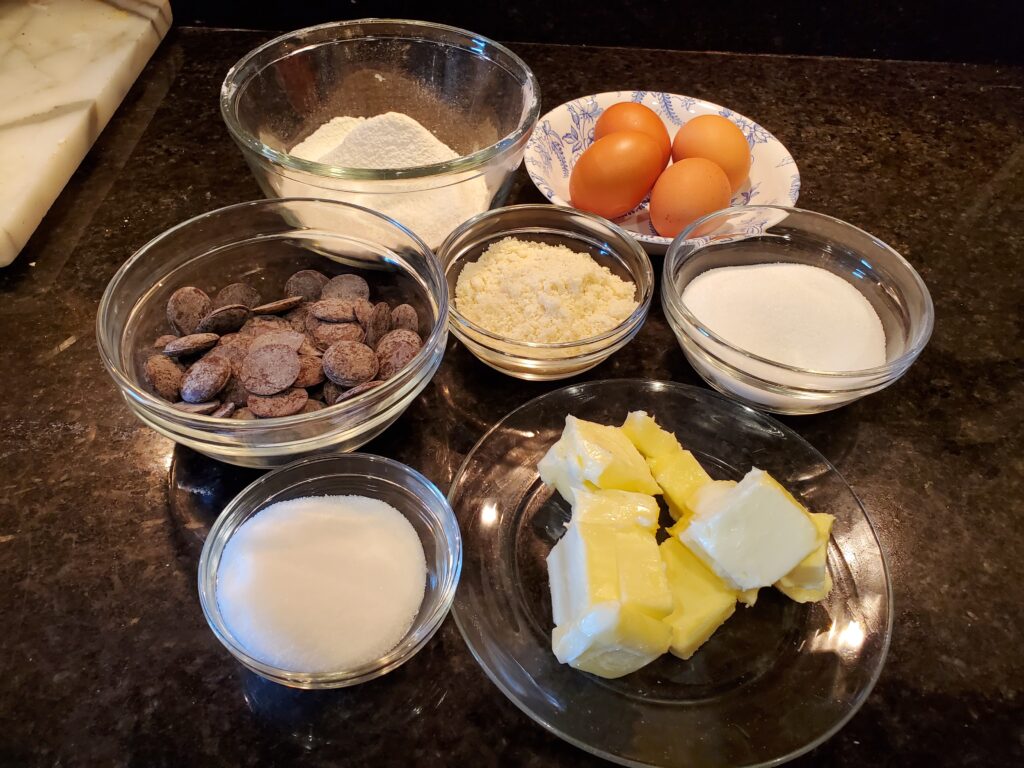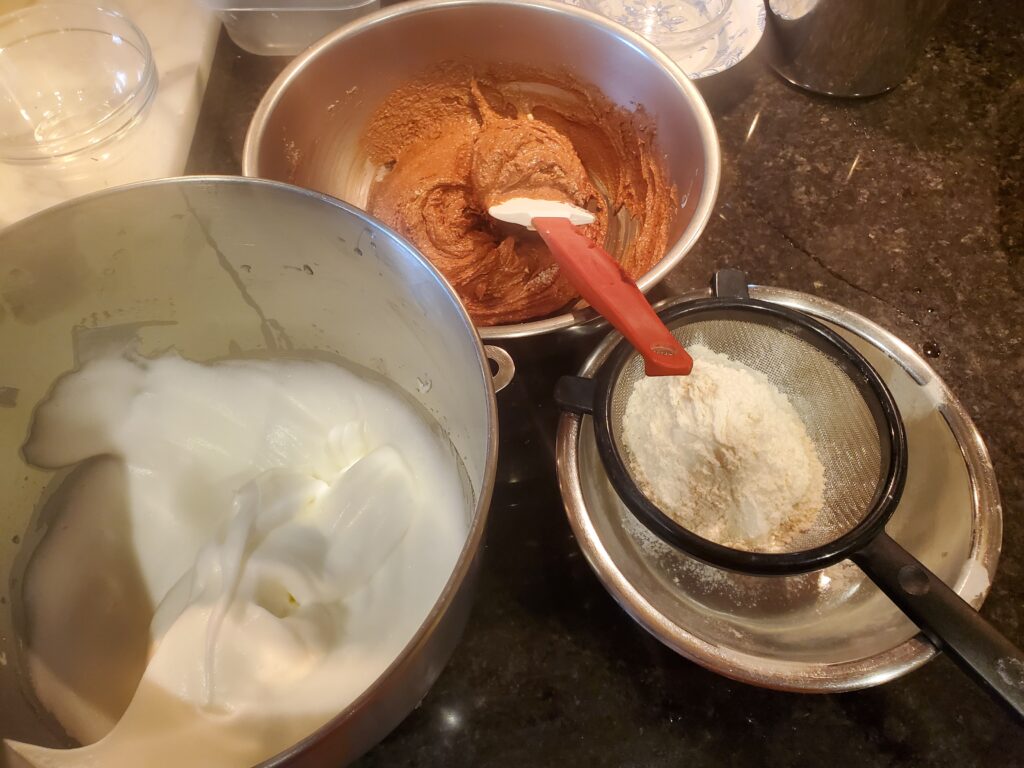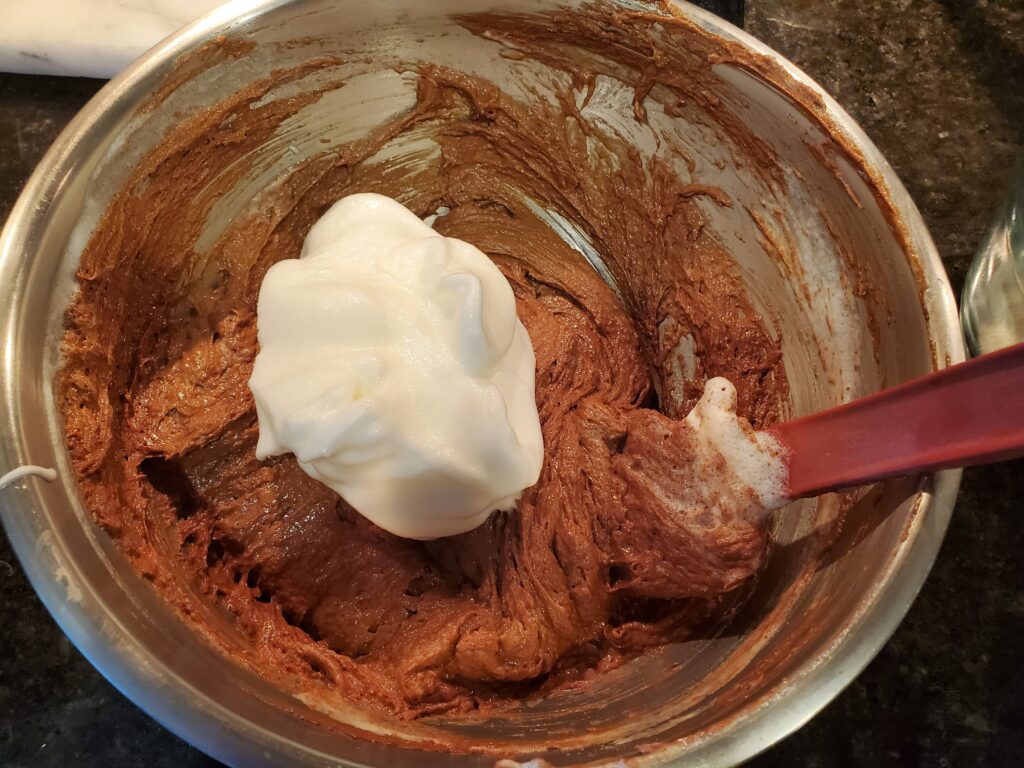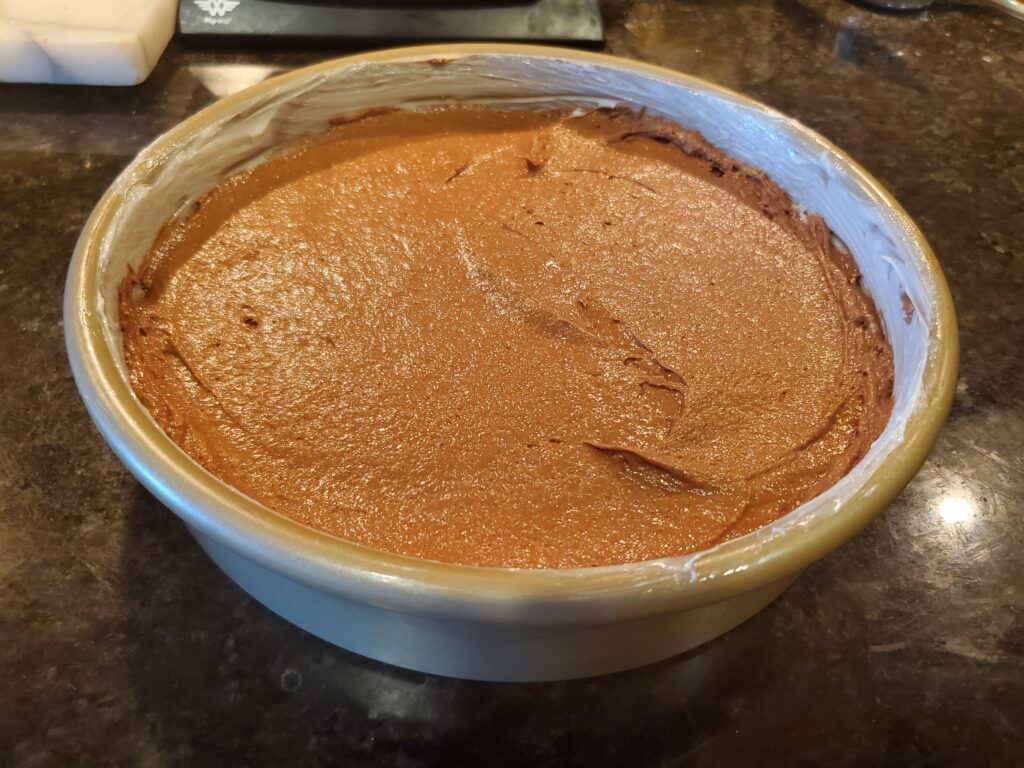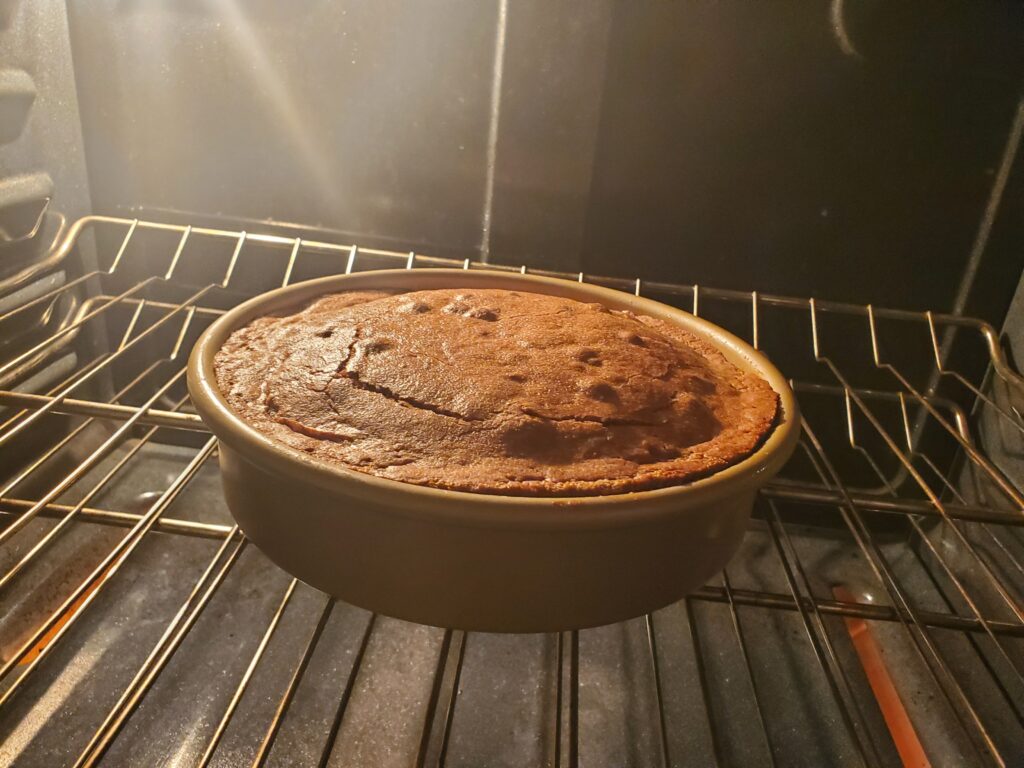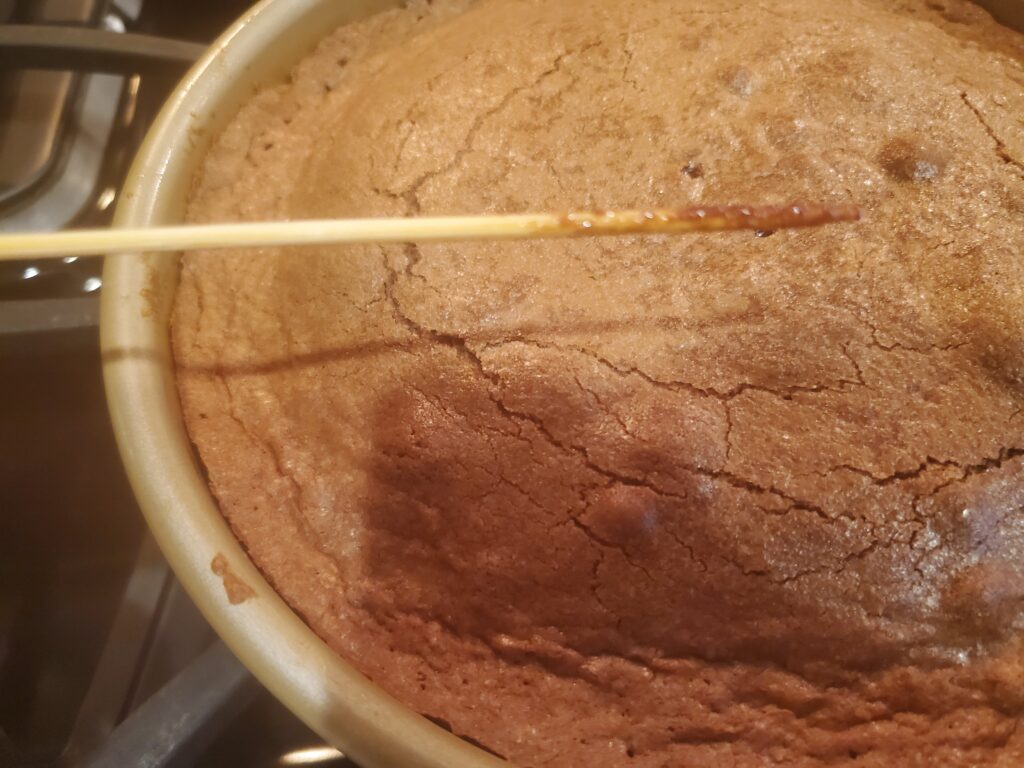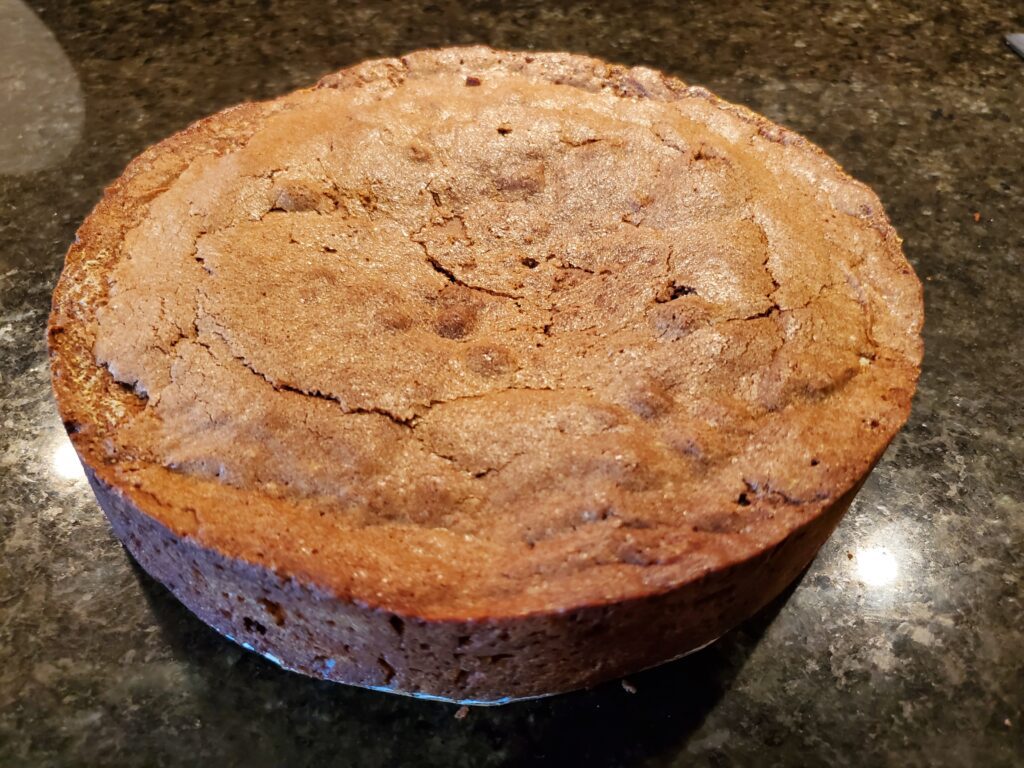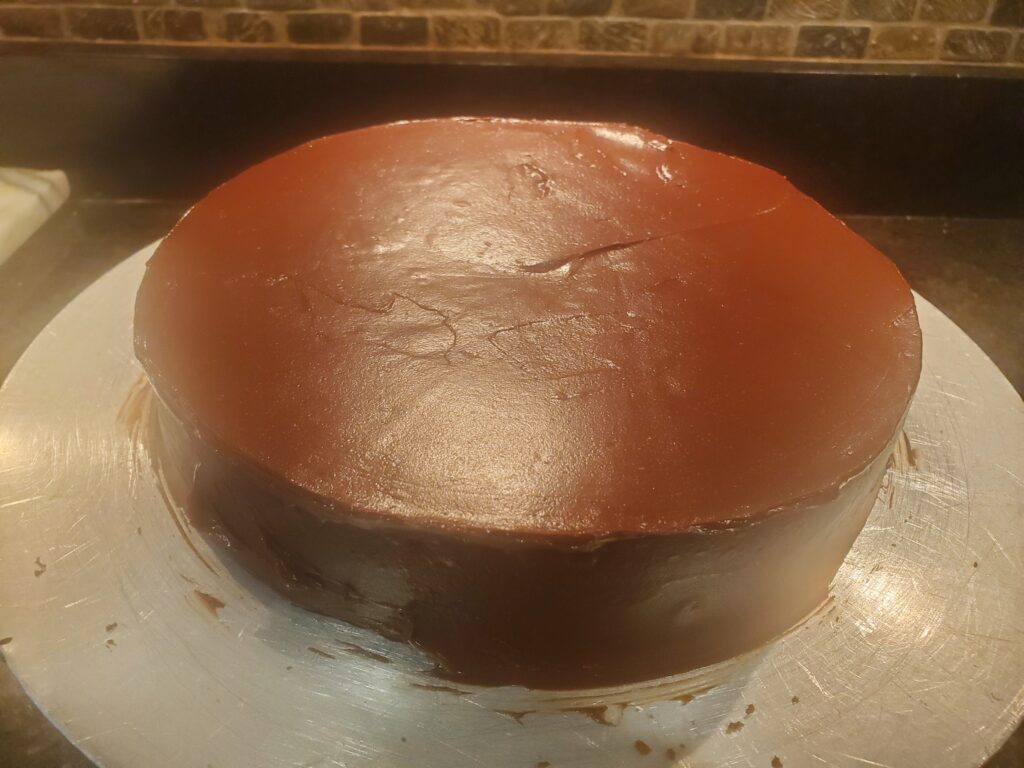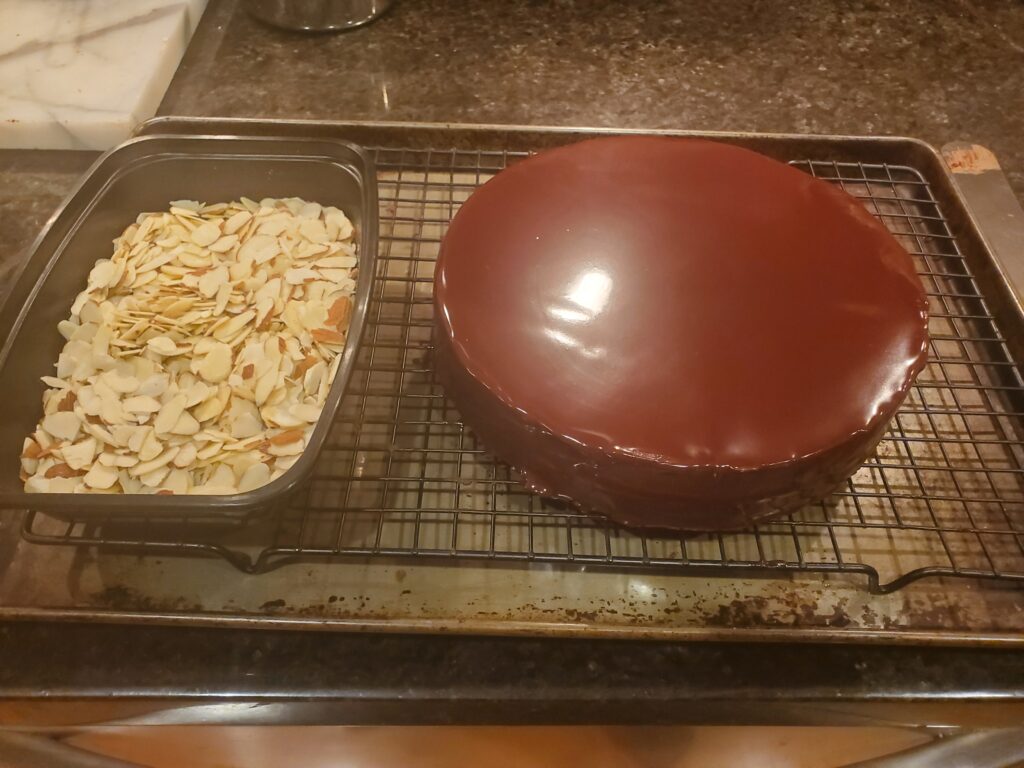Reine de Saba
It’s appropriate that we end this tour through the world of French-style chocolate cakes with a version of Julia Child’s Reine de Saba from Mastering the Art of French Cooking, Volume 1. Published in 1961, this may be the earliest American cookbook recipe for this type of rich, slightly underdone, single layer gâteau. Many recipes that followed with names such as Chocolate Almond Cake or French Chocolate Cake, are derivations of this classic.
Unlike the previous three cakes, Reine de Saba is enrobed in a chocolate glaze, adding bit more elegance as well as another flavor element. How the glaze is handled and applied determines the degree of shine it maintains. The cake, like the Gâteau au Chocolat and the Bête Noire is kept and served at room temperature.
This is the first Friday Baking Project cake utilizing the Modified Creaming method. In traditional creaming method cakes, whole eggs are slowly added to the creamed butter and sugar. Here, the eggs are separated, the yolks added to the creamed mixture and the whites are beaten with some of the sugar to provide leavening.
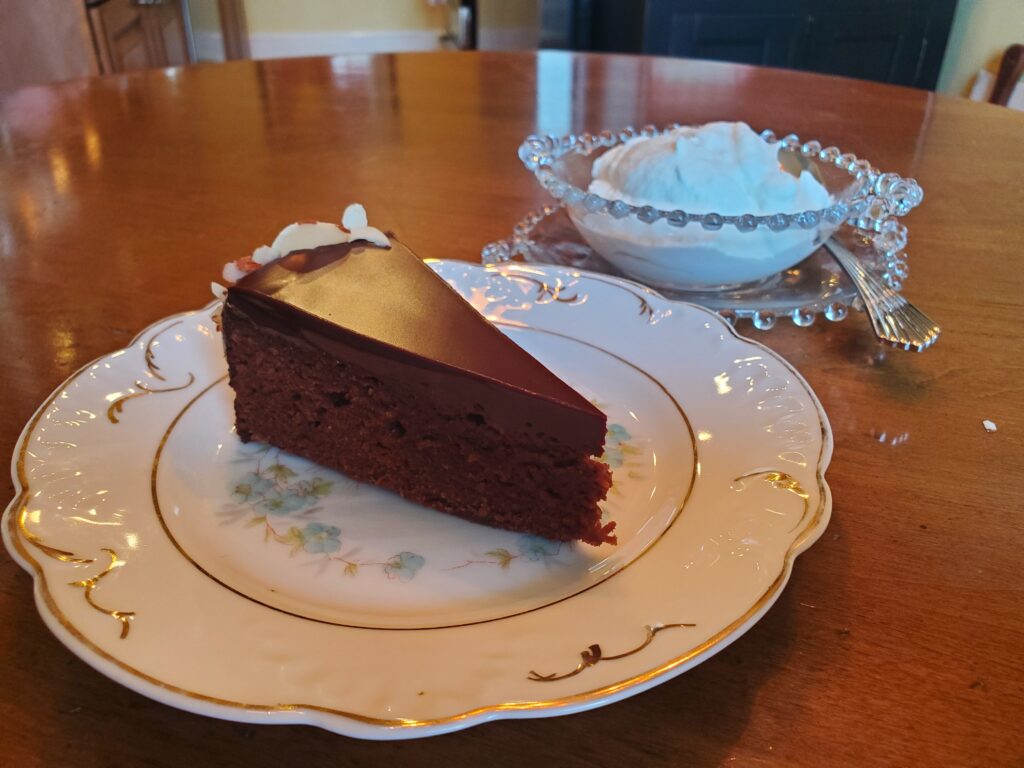
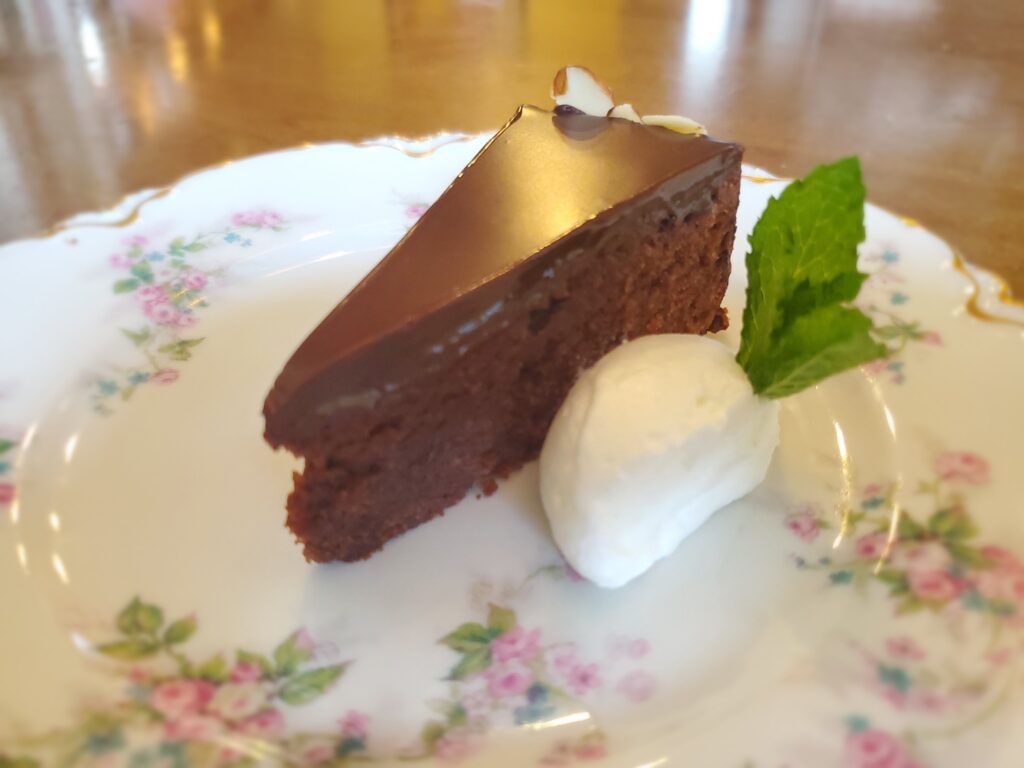
The critical step in the Modified Creaming method is to lighten the thick butter/sugar/egg yolk/chocolate batter by mixing in about one quarter of the whites. This allows the gentle folding in of the remaining egg whites without overmixing.
Crumb coating a cake is another pastry technique we first encounter with Reine de Saba. In crumb coating, we cover the top and sides of a cake with a very thin layer of the icing (buttercream, ganache) to seal the cake and provide a smooth surface for the final covering. The Reine de Saba is crumb-coated with ganache prior to covering with a shiny chocolate glaze. This is an excellent use for leftover ganache, which can be remelted the day before and allowed to sit overnight. You will need four to five ounces of ganache.
In my old Seven Layers recipe notebook is a version of this recipe calling for two pounds of chocolate, a reminder that it was used as the foundation for many Martha’s Vineyard wedding cakes. Covered with a simple basketweave of Swiss meringue buttercream, it put the emphasis on taste over intricate designs.
Not having made Reine de Saba in years, it’s been wonderful to rediscover this classic. I and those who sampled my two test bakes thoroughly enjoyed it. All pastry chefs and home bakers owe Julia Child a big debt of gratitude for enlightening us to the wonders of French-style chocolate cakes.
Reine de Saba
| Yield: 1 8-inch cake | # of Servings: 10 | Method: Modified Creaming |
Ingredients
Ganache
2 oz chocolate, 66%, wafers or broken up
¼ cup (2 fl oz) heavy cream
Cake
5 ½ oz (154 g) 61% to 64% chocolate, wafers or broken up
11 tbl (5.5 oz / 156 g) unsalted butter, room temperature
½ cup + 2 tbl (4.65 oz / 132 g) sugar
4 egg yolks
½ cup (1.75 oz / 50 g) almond flour
½ cup + 3 tbl (3.35 oz / 95 g) cake flour, sifted
4 egg whites
â…› tsp salt
¼ cup (1.8 oz / 51 g) sugar
Decoration:
1 ½ cup (6 oz / 170 g) sliced natural almonds, lightly toasted
Special equipment needed:
- 8″ by 2″ cake pan
- Parchment paper circle, 8″ cardboard circle
- Handheld or countertop mixer.
- Instant read thermometer
- Long spatula for glazing the cake
Pre-recipe preparations:
- Make ganache the day before
- Butter the cake pan, line with parchment circle, butter the parchment.
- Preheat the oven to 350 °F
Directions
Ganache – (Day before)
- Bring heavy cream to the simmer in a small saucepan. Add the chocolate, let sit for a minute, then stir until smooth.
- Pour into small container, cover with plastic film, poke a few holes with paring knife. Let sit overnight.
Baking the cake:
- Melt chocolate. Keep warm
- Using the paddle attachment, cream butter and sugar until light and fluffy.
- Add egg yolks, one at a time, beating well between each addition. Scrape down sides of the bowl and beat until smooth.
- Add chocolate to egg yolk mixture, beat to combine. This can also be done by hand with a plastic spatula.
- Add almond flour, beat just until combined.
- In clean bowl, with the whip attachment, beat the egg whites with the salt to soft peaks.
- Slowly add the sugar, and beat until just firm meringue.
- Stir ¼ of the egg whites into the batter to lighten.
- Fold in one half of the remaining whites along with one half of the sifted cake flour. A totally homogenous mix is not necessary at this point.
- Fold in remaining whites and flour just until no streaks of egg whites remain and the flour is combined. The batter with be thick.
- Pour into cake pan and smooth out with a small spatula.
- Bake for between 31 and 33 minutes, until the center of the cake feels firm to the touch and a cake tester inserted into the center has oily chocolate adhering to it. (See pic). Do not overbake or it will lose its creaminess.
- Place cake pan on cooling rack for 10 minutes.
- Place an 8″ cardboard circle, cake plate, or another cooling rack on top and invert. Peel parchment circle off and invert again onto another cardboard circle, cake plate, or cooling rack. Cake should now be right side up.
- Let cake cool to room temperature. Cake will sink slightly in the center as it cools. The cake may be wrapped tightly in plastic film at this point and finished the next day. Or frozen for up to one month. Bring back to room temperature before finishing.
Crumb coating the cake:
- If cake is on an 8″ cardboard circle, trim away any overhang kitchen scissors.
- With a long-serrated knife, carefully level the cake by slicing the higher edges.
- Brush away any crumbs on the cake and from your work surface.
- Spread a thin layer of the ganache over the top and sides of the cake. It doesn’t have to look pretty at this point, you are just sealing the cake to make a smooth surface for the chocolate glaze.
- Let the crumb-coated cake set in a cool place while you prepare the glaze.
Chocolate glaze:
- Place the chocolate, butter, and corn syrup in a small heavy bottomed saucepan.
- Over very low heat, warm the mixture enough so the chocolate is mostly melted. Do not overheat.
- Remove from the heat and stir with heat-proof spatula or spoon until all the chocolate is melted. Stir with a whisk once or twice just until smooth. Do not whip air into the glaze.
- Let sit, gently stirring occasionally until 90 °F to 92 °F.
Finishing the cake:
- Place the cake on either a cooling rack over a clean work surface or a decorating turntable.
- Pour all the glaze over the top of the cake and with long metal spatula quickly spread the glaze over the entire cake, letting it fall over the sides. The less you work the glaze the shinier it will be.
- Use the glaze that has dripped off the cake to cover any bare spots.
- Lift the rack a half inch off the surface and drop to help the glaze drip down the sides.
- Let the cake sit for 2 minutes.
- Break up the almond slices slightly with your hands and press against the sides of the cake.
- Place on a serving plate or cake stand. As with all French-style chocolate cakes, the Reine de Saba goes well with a little slightly sweetened whipped cream on the side
- Cake may be kept at room temperature for three days.
